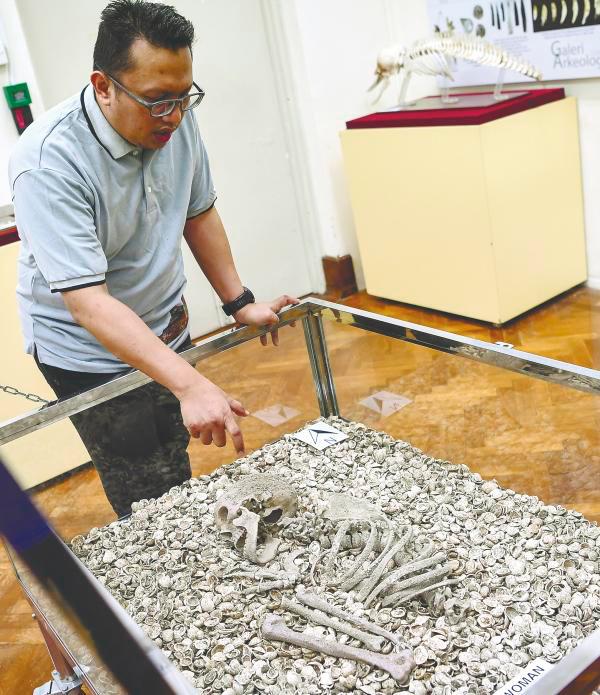GEORGE TOWN: Advancements in the study of “Penang Woman”, a prehistoric human female whose remains were discovered at the Guar Kepah archaeological site, continue to captivate scientists and historians worldwide.
The remains, discovered in 2017, are now the focus of DNA analysis and radiocarbon dating using Accelerator Mass Spectrometry (AMS) to provide insights into early human life in Southeast Asia and possibly rewrite history.
Universiti Sains Malaysia (USM) Centre for Global Archaeological Research director Prof Dr Stephen Chia said the primary objective of the collaboration is to uncover the genetics and chronometric age of the subject.
Penang Woman is estimated to be around 5,700 years old based on a shell sample obtained next to the skeletal remains.
Chia said the earthenware pottery found at the Guar Kepah site is possibly about 4,000 years old.
“However, it cannot be determined whether the pottery and the Penang Woman were from the same period. Incidentally, the remains were found in a flexed position, rather than in an extended position, in which the body is laid on its back flat, straight and extended.
“The Paleolithic hunter-gatherers usually bury their dead in a flexed position, unlike the Neolithic communities that bury their dead in an extended position,” said Chia.
The Penang Woman is currently kept in a humidity-controlled cabinet at USM.
“This is the only scientific laboratory for archaeological and geochemical research in Southeast Asia. The air-conditioning runs 24 hours at between 18°C and 20°C.
“We need to keep the bones in a relative humidity of between 50% to 60% to ensure that the bones do not deteriorate and turn to dust,” Chia added.
Dr Suresh Narayanen, who is part of the research team, briefed theSun on their research.
He said bone sampling for DNA analysis began in April, with experts from the School of Health Science USM and Malaysian Genomics Resource Centre Berhad (MGRC) conducting detailed cleaning and checking of the Guar Kepah skeleton.
“Selected bones, such as the forearm and rib bones, have been treated with sodium hypochlorite and drilled with minimal destruction to their morphological structures. A tooth sample has been selected for AMS radiocarbon dating,” said Suresh.
Meanwhile, USM School of Health Sciences geneticist Assoc Prof Dr Edinur Hisham Atan said approximately 250 to 750 nanogrammes of bone powder were collected from each bone and transferred to 2.5ml microcentrifuge tubes for further analyses at MGRC.
“These samples will be used to recover genetic information of Penang Woman. We will use cutting-edge methods for DNA extraction and sequencing.
“The Penang Woman genome will provide an important reference source for reconstructing genetic history in Malaysia and create a new dimension for archaeogenetics research of radiocarbon-dated ancient human remains in the country,” he said.
Studies on the earthenware pottery of Guar Kepah are also being conducted at USM.
“Two samples have been submitted for Optically Stimulated Luminescence dating, while others are examined using multiple analytical techniques to determine their source, technology and origin,” said Suresh.









